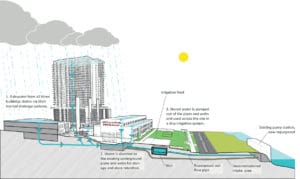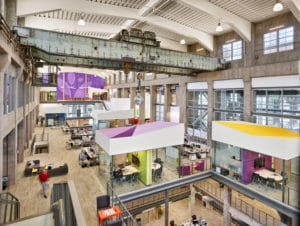Top Story
Location: Austin, Texas, United States
Developer: Seaholm Power Development, LLC
Designer: STG Design, Clayton and Little Architects, TBG Partners
Site Size: 7.8 Acre
Commissioned in 1948 to meet Austin’s growing electricity needs, the iconic Art Deco-inspired Seaholm Power Plant closed in 1989, leaving generations of Austinites yearning to restore this brownfield site to keep it in their expanding skyline. The Seaholm Power Plant Re-Development came to life as a 7.8-acre, residential urban neighborhood development with the renovated cast-in-place Power Plant at its heart. After being vacant and vandalized for over two decades, the 128,000 sf, LEED Gold Power Plant now hosts tech companies with a design that blends a modern aesthetic with the nostalgic artifacts of a bygone era when structures were built to endure for generations. The cavernous industrial shell of one of the original boilers was transformed into the swanky, 9,600 sf, four-story restaurant, Boiler Nine Bar + Grill. The Power Plant is neighbored by a contemporary two story, mixed-use low-rise building and 30-story, 280-unit residential high-rise, creating a juxtaposition to bring the Re-Development into the 21st century.
As the heart of the Seaholm EcoDistrict, an 85-acre development in Downtown Austin selected as one of ten projects in North America to participate in the EcoDistrict 1 Pilot Program, the project site was applauded by National Geographic for furthering Austin’s status as a pioneer of the green building movement. The sustainable efforts taken during redevelopment preserved or re-purposed many historical elements, most impressively converting the original intake systems into a 325,000-gallon rainwater harvesting system for site irrigation. It was important to keep the history of the site intact while transforming it to a place all of Austin can utilize – a goal shared by the City of Austin, developer and Austin natives for the fastest growing city in America to keep its culture rooted in public places. The Re-Development continues to be an integral part of Austin’s history, but is also serving as a prime model for the rest of the country that sustainable, multi-modal communities can thrive in the hustle and bustle of a city.
Publications: The ULI Global Awards for Excellence 2017 Winners and Finalists



